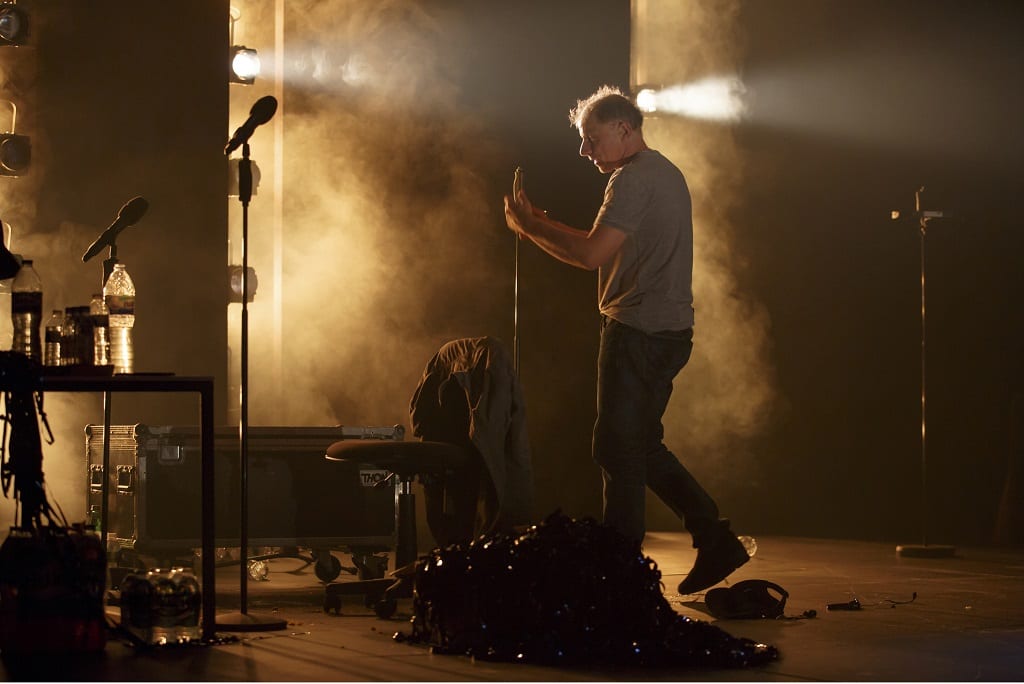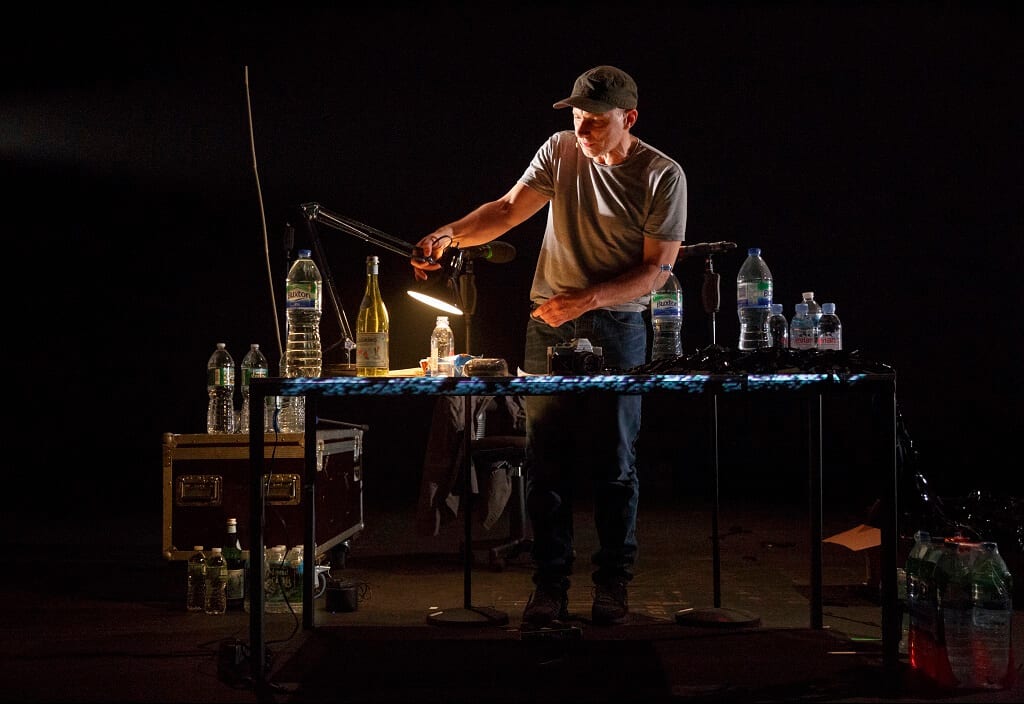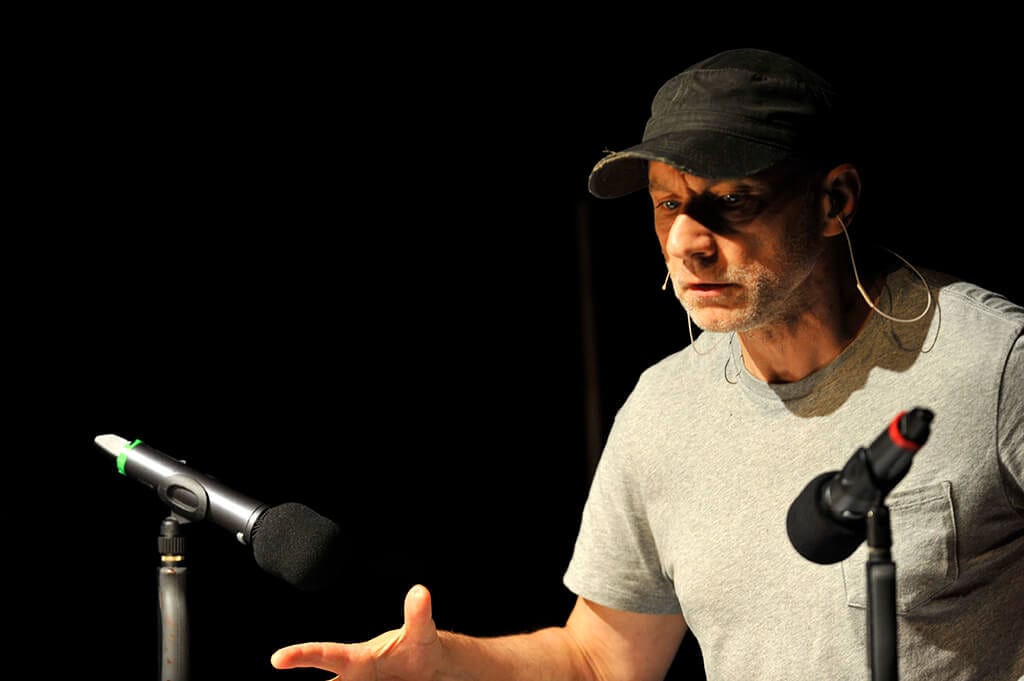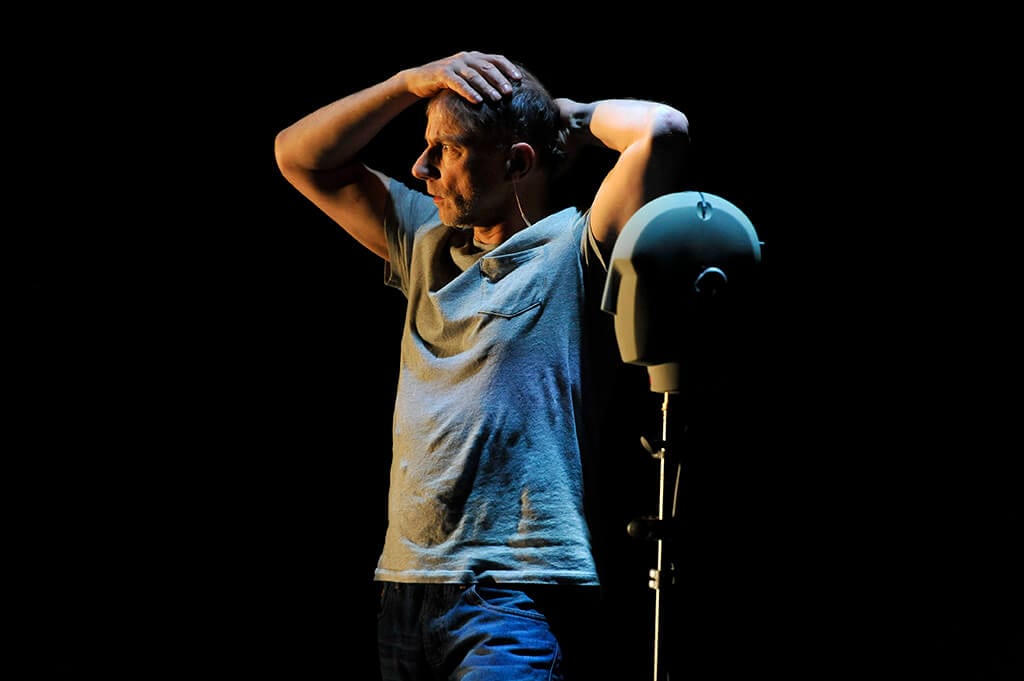Who do we actually encounter in The Encounter? A powerful artist, some faraway people, our own assumptions. If you crave theater that puts you through an experience and forces an audience to think, there is much to applaud here.
The Encounter is really not a play at all in any conventional sense. The stage is seemingly bare but for a table with microphones, some water bottles and a foam human head on a microphone stand (actually another very sensitive microphone). In an imaginative and meaningful use of technology in the theater, we all don headphones to make the experience so intimate it feels like it’s happening inside our brains. The show’s highly inventive creator and performer Simon McBurney addresses us directly. He and sound designers Gareth Fry and Pete Malkin play skillfully with their ability to aurally place events before us, beside us, surprisingly behind us.
This unusual sense of immersion and dislocation is very purposeful, because the story McBurney ultimately shares is about Lauren McIntyre, the National Geographic photographer who was kidnapped in 1971 by the Mayoruna people deep in the Amazon rain forest. There, with barely a linguistic link, we experience his disorientation and survival struggle through natural and human perils, and through otherworldly rituals that challenge everything that defines reality to a modern person–self, culture, even time itself. The book that inspired the show, Amazon Beaming by Petru Popescu, recounts Mcintyre’s tale of finding the source of the Amazon with the aid of telepathic communications with the war-painted Mayoruna’s shaman, using what in the show is referred to as “the old language”.
McBurney is disarmingly casual at first, a relatable Brit. He charms us without seeming to, finally transporting us beyond our wits. As he plays with what we perceive as real, what live, and what recorded, the seemingly bare stage space comes to life as well. Through the technical wizardry of lighting designer Paul Anderson, the otherwise forgettable backdrop pulses, flows, and undulates. The stage and our audio landscape become almost terrifyingly full, artfully relieved from time to time by the illusion that McBurney is interrupted in the telling by his daughter in another reality back in London.
It’s such a dense and frenetically paced experience, and so intimate. You either have to go with it, like a religious experience, or you may crave a little more fourth wall distance three-quarters of the way in. Oddly, considering how personal the headphones make the experience (you can actually close your eyes throughout and experience it like a radio play), the high energy performance is so tightly choreographed and synched and mediated with the technology, it can feel unlike a live performance at all at times.
The style of storytelling is so distinctive that it almost dwarfs the remarkable tale itself. Without giving too much away–because you really ought to experience this–we “see” in the Mayoruna a people with a profound relationship with nature and a warning for us if we fail to restore our own.
This review benefited from insights from PlaysToSee.com contributor Elle Jackie.




